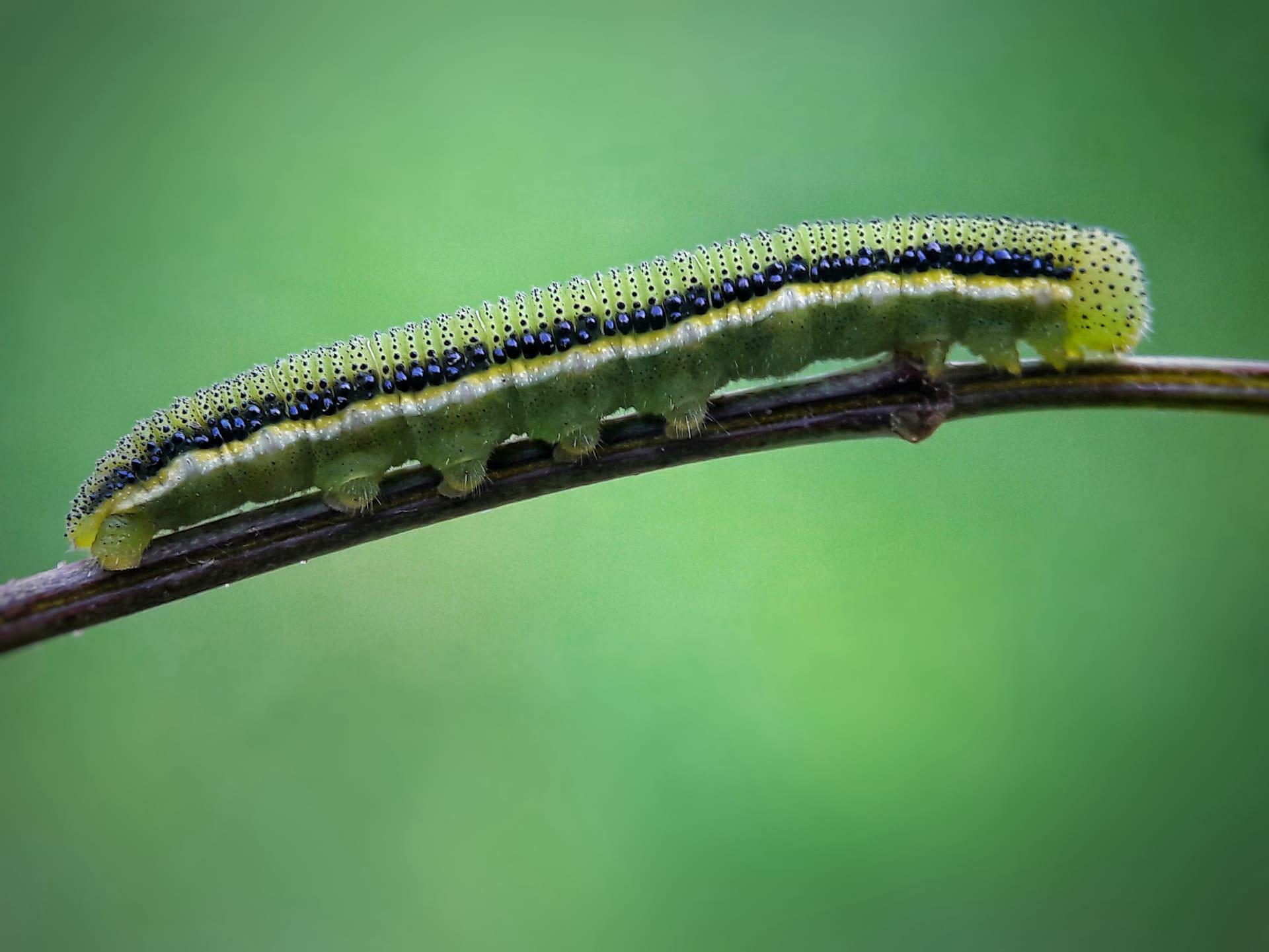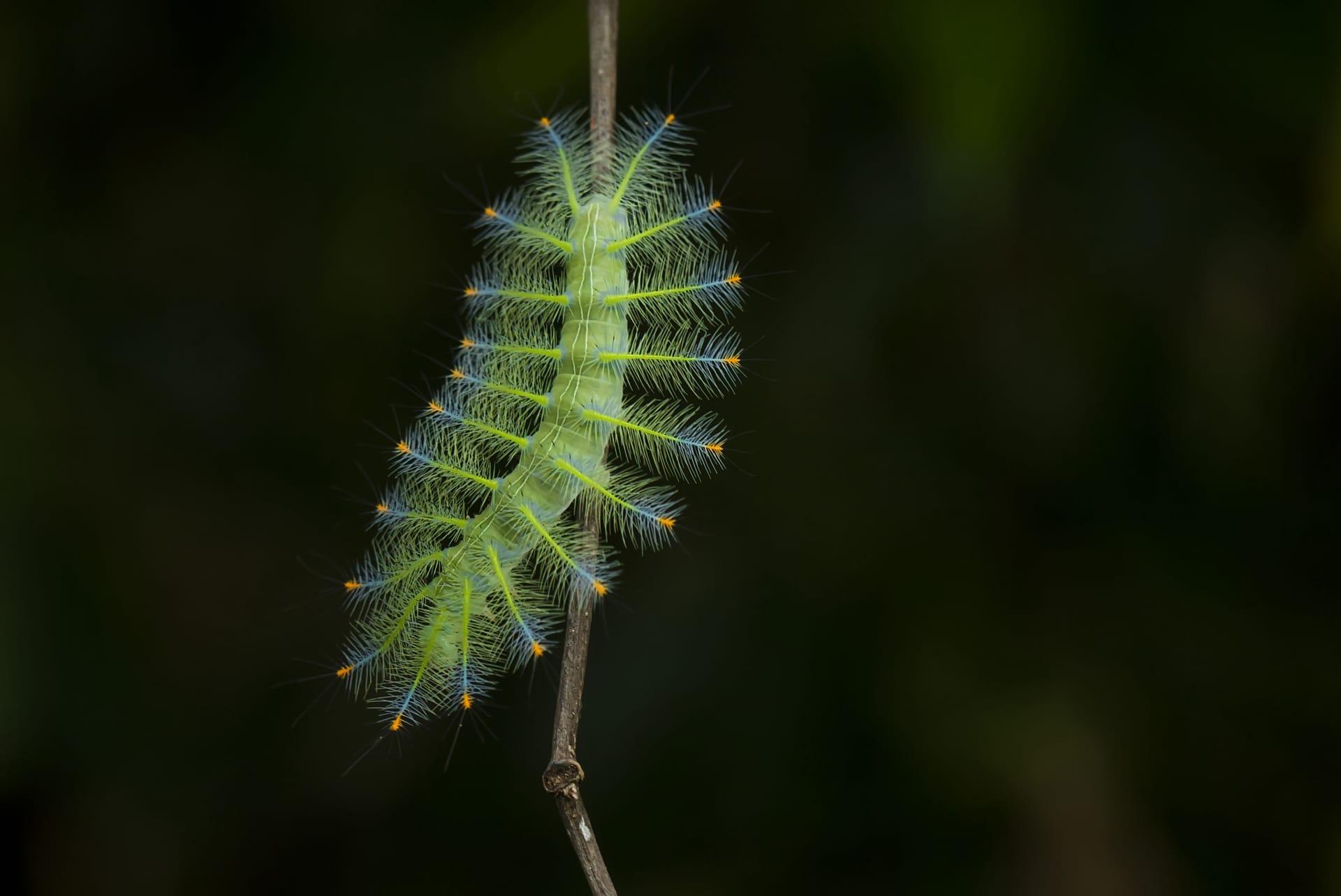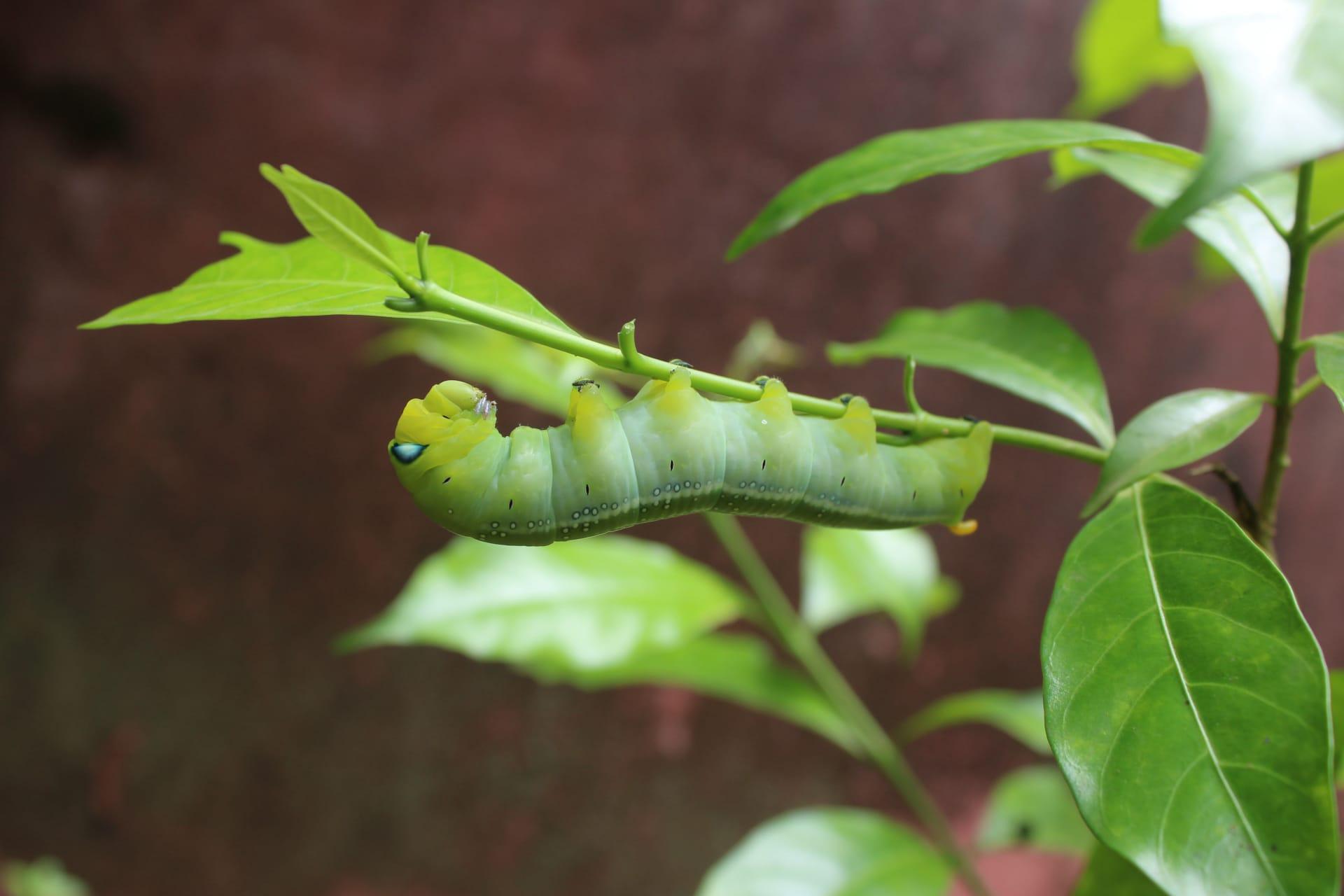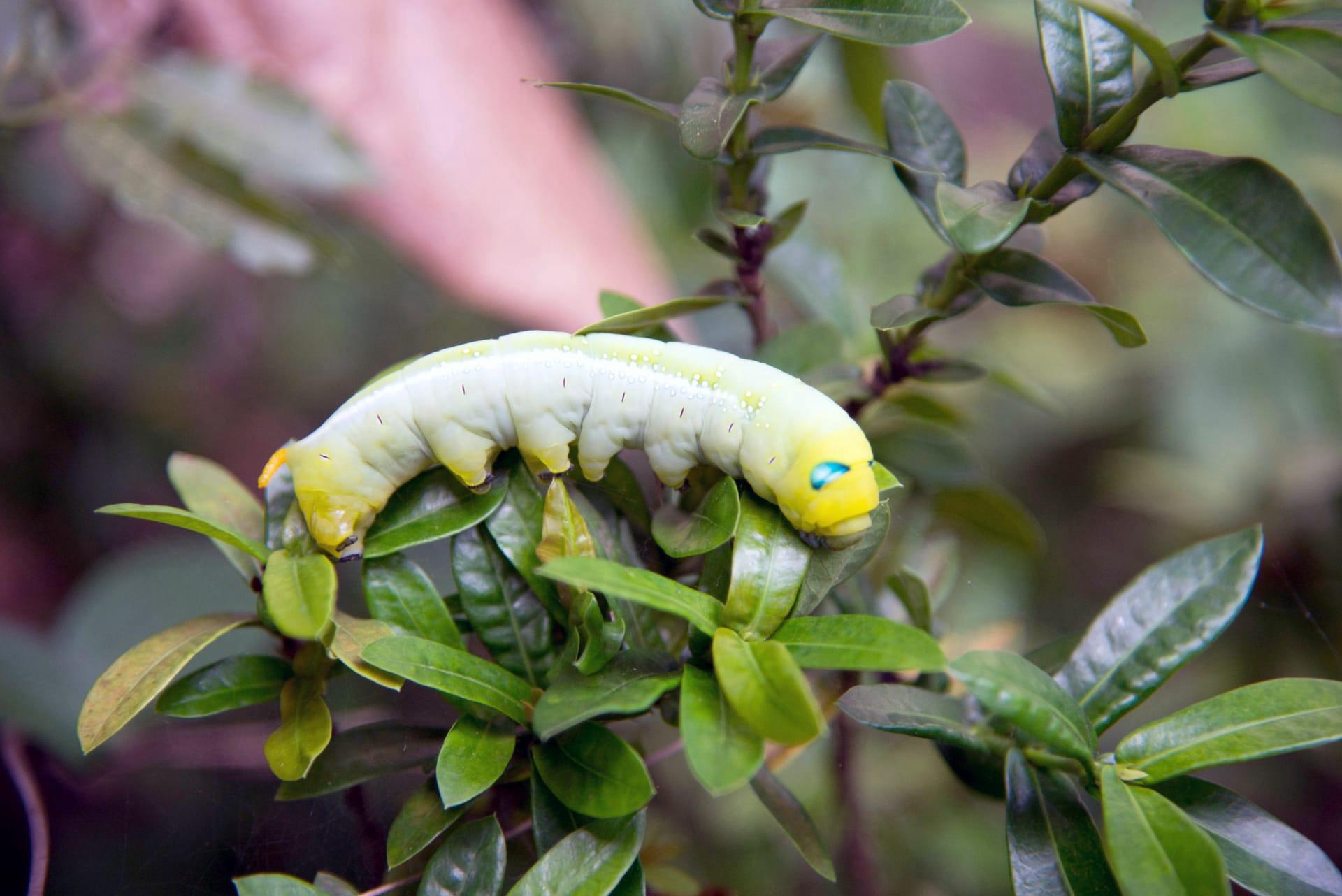Green Caterpillar Trivia
- Home /
- Trivia Question /
- Animal /
- Green Caterpillar Trivia
1
Question: What distinguishes green caterpillars from other caterpillar species in terms of their diet?
Answer: Green caterpillars, such as those from the species Manduca sexta, are predominantly herbivorous. They primarily feed on leaves of plants like tobacco and tomato, showing a strong preference for certain types of vegetation. Their diet is rich in chlorophyll, contributing to their distinct green coloration which aids in camouflage. Unlike some other caterpillars, they rarely consume fruits or other plant parts.
Question: How do green caterpillars contribute to their ecosystem?
Answer: Green caterpillars play a crucial role in their ecosystems. They serve as primary consumers, helping to control plant growth and contribute to the cycling of nutrients. Their feeding activity, while sometimes harmful to crops, is vital for the health of natural habitats. Additionally, they are a key food source for various predators, including birds and small mammals, thus supporting the food chain.

2
Question: Is it true that all green caterpillars are poisonous?
Answer: No, this is a common misconception. While some green caterpillars, like those of the Luna moth (Actias luna), have toxic chemicals in their bodies as a defense mechanism, not all of them are poisonous. Many green caterpillars are harmless and their bright color is mainly for camouflage rather than a warning sign.
Question: Can green caterpillars cause skin irritation?
Answer: Some species of green caterpillars, such as the Io moth caterpillar (Automeris io), have urticating hairs that can cause skin irritation or allergic reactions in humans. However, this is not a characteristic of all green caterpillars. Most of them do not pose any threat to humans and can be safely observed from a distance.

3
Question: How do green caterpillars adapt to avoid predators?
Answer: Green caterpillars have developed several adaptations to evade predators. Their green coloration blends perfectly with leaves, making them hard to spot. Some species mimic plant parts like twigs or even bird droppings. They also remain motionless during the day, becoming active at night when fewer predators are around. Additionally, some release unpleasant odors or make hissing sounds to deter predators.
Question: What is the lifespan of a green caterpillar before it turns into a butterfly or moth?
Answer: The lifespan of a green caterpillar before metamorphosis varies greatly among species. Generally, this larval stage lasts between 2 to 4 weeks. During this period, they undergo several molts as they grow. After this, they enter the pupal stage, where they transform into a butterfly or moth, a process that can take anywhere from a few weeks to several months, depending on the species and environmental conditions.

4
Question: Do green caterpillars have a special way of moving?
Answer: Yes, green caterpillars move in a unique way known as "locomotion." They have three pairs of true legs at the front and several prolegs towards the back. They move by contracting their muscles from the rear to the front, creating a wave-like motion. This movement is efficient for navigating leaves and branches.
Question: How do green caterpillars breathe?
Answer: Green caterpillars breathe through a series of small openings along the sides of their body called spiracles. Air enters the spiracles and travels through a network of tubes called tracheae, supplying oxygen directly to their tissues. This system allows for efficient gas exchange, crucial for their high metabolic rate during the growth phase.

5
Question: What happens to green caterpillars during winter?
Answer: Many green caterpillars adapt to winter through a process called diapause, a form of hibernation. During diapause, their metabolic rate slows down significantly, and they often hide in leaf litter or soil to protect themselves from the cold. Some species even have antifreeze-like chemicals in their body to prevent freezing.
Question: Can green caterpillars regenerate lost body parts?
Answer: Green caterpillars have a limited ability to regenerate lost body parts. While they cannot regrow major parts like their head or true legs, they can sometimes regenerate smaller parts, such as prolegs. However, this ability varies among species and is more common in younger caterpillars, as their regenerative capabilities decrease with age.